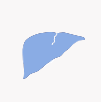CALL TODAY 646-846-1136 | EMAIL
Surgical Experts Dedicated to Improving Lives
At Lenox Hill Surgeons, our dedicated team of nyc surgeons and medical professionals provide compassionate care with the highest ethical & professional standards. In our state of the art facility, we offer surgical services using only the most cutting edge and current procedures and treatments.We specialize in general surgery, including extensive experience in performing hernia repair surgery. Our expertise is in minimally invasive surgery and robotic surgery. Minimally invasive and robotic surgery often allow patients to experience easier recovery than traditional open surgery. They also allow for more precise and less traumatic surgery. When robotic and minimally invasive surgery is not an option, we are also skilled and experienced in traditional open surgical procedures.
All of our doctors are experienced and skilled surgeons having undergone extensive training in school, residency and fellowships. They all practice medicine with ethical behavior, compassion and superb bedside manner. In the operating room they all exhibit precise mechanical abilities, analytical thinking and the ability to visualize tissue in three dimensions. These innate and learned skills allow our surgeons to be some of the most dexterous and skilled professionals in all of New York City and the Country.
Call us: 646-846-1136
About The Surgeons
PATIENT TESTIMONIALS
Recent Awards
We are honored and deeply appreciative to have consistently received prestigious awards and recognition year after year, establishing us as one of New York’s foremost hospitals for a wide range of general surgeries, safety measures, specialized procedures, and overall excellence in healthcare. At Lenox Hill Surgeons, our unwavering commitment lies in delivering exceptional care and unwavering support to our patients, guaranteeing their safety and successful recovery throughout their entire surgical experience.
Hospital Quality Awards
 America’s 50 Best Hospitals Award™ (2023, 2022)
America’s 50 Best Hospitals Award™ (2023, 2022)
Top 1% in the nation for providing the highest clinical quality year over year.

America’s 100 Best Hospitals Award™ (2021)
Top 2% in the nation for consistently delivering clinical quality year over year.

America’s 250 Best Hospitals Award™ (2023, 2022, 2021)
Top 5% in the nation for consistently delivering clinical quality.

Patient Safety Excellence Award™ (2023, 2022)
Top in the nation for providing excellence in patient safety by preventing infections, medical errors, and other preventable complications.
Specialty Clinical Quality Awards

America’s 100 Best Hospitals for Cardiac Care Award™ (2023, 2022, 2021, 2020, 2019)
Superior clinical outcomes in heart bypass surgery, coronary interventional procedures, heart attack treatment, heart failure treatment, and heart valve surgery.

America’s 100 Best Hospitals for Coronary Intervention Award™ (2023, 2022, 2021, 2020, 2019)
Superior clinical outcomes in coronary intervention procedures (angioplasty with stent).

America’s 100 Best Hospitals for Prostate Surgery Award™ (2023, 2022, 2021)
Superior clinical outcomes in prostate removal surgery and transurethral resection of the prostate.
Click to see all of our Healthgrades best doctors awards


Visit our main website at www.LenoxHillSurgeons.com
Blog Posts are Below:
Hernia Repair Surgery – NYC Surgeon
Hernia Repair Surgery: Steps, Benefits, Side-Effects, Precautions & Prognosis
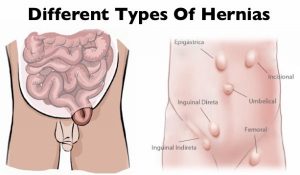 Hernia repair surgery entails the application of instrumental and manual procedures for correcting herniation of tissues or viscera including groin, abdomen, brain, and diaphragm. Internal organs, composed of tissues, could get herniated or bulged, forcing them to protrude via the wall encasing them. Hernias involving the groin (an inguinal hernia) and the umbilical cord (an umbilical hernia) are two of the most prevalent forms of a hernia.
Hernia repair surgery entails the application of instrumental and manual procedures for correcting herniation of tissues or viscera including groin, abdomen, brain, and diaphragm. Internal organs, composed of tissues, could get herniated or bulged, forcing them to protrude via the wall encasing them. Hernias involving the groin (an inguinal hernia) and the umbilical cord (an umbilical hernia) are two of the most prevalent forms of a hernia.
Since a hernia does not heal on its own but rather expands over time, it is crucial that you opt for surgical treatment to avoid unnecessary/preventable complications in the long run. Hernia surgery, usually performed on an outpatient basis, is a moderately simple operation that can help remedy the organ’s bulging and restore it to its original position.
Steps
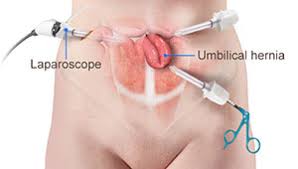 Two of the most popular types of hernia repair surgery is ‘herniorrhaphy’ and ‘hernioplasty’. Herniorrhaphy-the traditional hernia repair technique-is still conducted extensively where the surgeon makes a wide and long notch over the herniated organ. Thereafter, the physician removes the protrusion and reinstates the dislodged organ or tissues to its actual site.
Two of the most popular types of hernia repair surgery is ‘herniorrhaphy’ and ‘hernioplasty’. Herniorrhaphy-the traditional hernia repair technique-is still conducted extensively where the surgeon makes a wide and long notch over the herniated organ. Thereafter, the physician removes the protrusion and reinstates the dislodged organ or tissues to its actual site.
Finally, the doctor sutures the hole in the muscle via which the protuberance developed, sterilizes the incision, and sews it up. Hernioplasty is very much similar to herniorrhaphy procedurally excepting that in the final step, the surgeon overlays a sterile mesh (produced from animal tissues or polypropylene) on the muscular notch rather than suturing it. The nature or type of your herniation will determine the mode of repair surgery you’ll need to opt for.
Strangulated, reducible, and irreducible hernias are the three most widespread kinds of hernias. Both of the aforementioned surgical operation procedures can be carried out using a laparoscope or via open surgery.
Benefits
Both hernioplasty and herniorrhaphy are straightforward and uncomplicated surgical repair processes that take about 30-40 minutes to complete. You won’t feel any pain as the surgery will be done using either local or general anesthesia. Majority of patients are discharged from the hospital or medical center on the very day the laparoscopic surgery is performed. The usual benefits of the laparoscopic repair operation include:-
- Very short duration of stay
- Faster healing
- Reduced pain post surgery
- Quicker return to normal life
- Minimal costs (including all the expense heads)
- Lower risks of infection
Side Effects
The side effects of this type of surgery, most of which are rare, involve:-
- Swelling and redness around the incision or opening
- Blood clot
- Mesh pain
- Urinary tract infection
- Urinary incontinence
- Infection
- Difficulty urinating
- Hernia recurrence
- Neuralgia or nerve damage
- Constipation
- Kidney failure or complications
- Breathing problems or pneumonia
Precautions
You must abide by the surgeon’s instructions once you return home (which are usually on the same day the surgery is carried out) for a speedy recovery. Take all the prescribed medications on time, including the anti-inflammatory drugs for minimizing the possibilities of incision swelling. Contact your surgeon instantly if you’ve recurrent spells of fever, coughs, chills, nausea, abdominal swelling, bleeding as well as experience difficulty in urinating. Make sure you get sufficient rest for at least two weeks following the operation so that you can get back to work at the earliest.
Prognosis
Most hernia surgeries are effective, enabling patients to recover fully within 4-6 weeks. A typical person who has undergone hernia repair surgery can resume normal activities 2 weeks after the procedure.
Concluding Remarks
Opting for a surgical procedure for remedying a hernia is highly recommended not only for avoiding complications which could take a fatal turn (though very rare) but also for going back to leading a normal life. You can make an appointment with our general surgeon for a detailed, one-to-one consultation.
References
- http://www.medtronic.com/us-en/patients/treatments-therapies/hernia-surgery/about-recovery.html
- https://www.webmd.com/digestive-disorders/inguinal-hernia#1
- https://www.medicalnewstoday.com/articles/319753.php
- https://www.highgatehospital.co.uk/things-you-need-to-know-hernia-operation/
- https://www.webmd.com/digestive-disorders/need-surgery-hernia#1
- http://columbiasurgery.org/news/2014/04/15/hernias-what-you-need-know
- https://en.wikipedia.org/wiki/Hernia_repair
- https://my.clevelandclinic.org/health/treatments/6905-laparoscopic-surgery-for-hernia-repair/risks–benefits
General Surgery
Here are some brief descriptions about the different types of general surgery we perform:
Laparoscopic surgery
This is a relatively new specialty dealing with minimal access techniques using cameras and small instruments inserted through 0.3 to 1 cm incisions. Robotic surgery is now evolving from this concept (see below). Gallbladders, appendices, and colons can all be removed with this technique. Hernias are now repaired mostly laparoscopically. Most bariatric surgery is performed laparoscopically.[citation needed] General surgeons that are trained today are expected to be proficient in laparoscopic procedures.
Colorectal surgery
General surgeons treat a wide variety of major and minor colon and rectal diseases including inflammatory bowel diseases (such as ulcerative colitis or Crohn’s disease), diverticulitis, colon and rectal cancer, gastrointestinal bleeding and hemorrhoids.
Endocrine surgery
General surgeons are trained to remove all or part of the thyroid and parathyroid glands in the neck and the adrenal glands just above each kidney in the abdomen. In many communities, they are the only surgeon trained to do this. In communities that have a number of subspecialists, other subspecialty surgeons may assume responsibility for these procedures.
Surgical oncology
Surgical oncologist refers to a general surgical oncologist (a specialty of a general surgeon), but thoracic surgical oncologists, gynecologist and so forth can all be considered surgeons who specialize in treating cancer patients. The importance of training surgeons who sub-specialize in cancer surgery lies in evidence, supported by a number of clinical trials, that outcomes in surgical cancer care are positively associated to surgeon volume—i.e., the more cancer cases a surgeon treats, the more proficient he or she becomes, and his or her patients experience improved survival rates as a result. This is another controversial point, but it is generally accepted—even as common sense—that a surgeon who performs a given operation more often, will achieve superior results when compared with a surgeon who rarely performs the same procedure. This is particularly true of complex cancer resections such as pancreaticoduodenectomy for pancreatic cancer, and gastrectomy with extended (D2) lymphadenectomy for gastric cancer. Surgical oncology is generally a 2 year fellowship following completion of a general surgery residency (5-7 years).
Contact us at 646-846-1136 to schedule an appointment.
Esophagus Surgery: Addressing Esophageal Conditions and Surgical Treatments
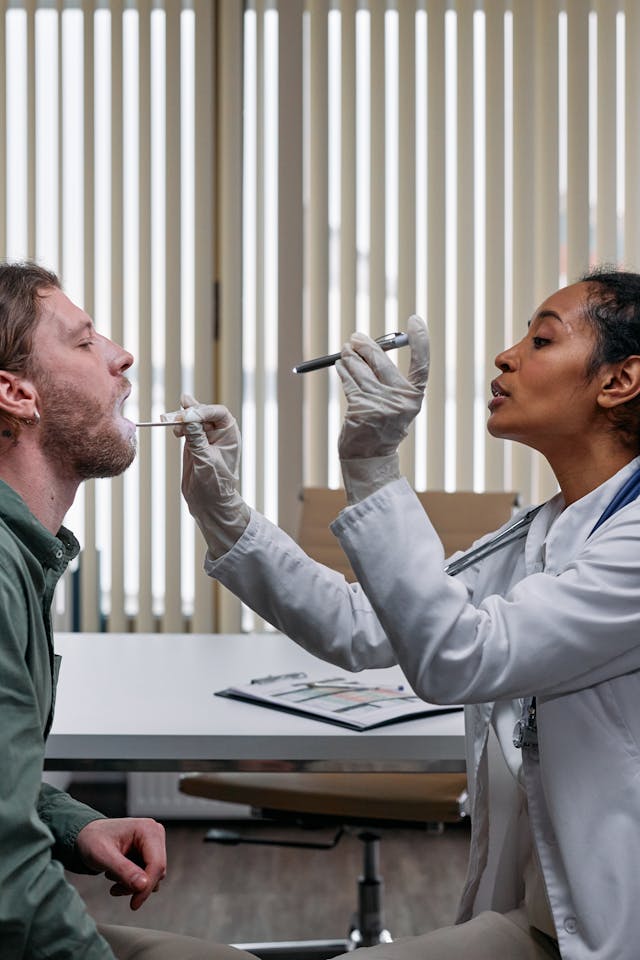 What are the major esophageal conditions and surgical treatments? The esophagus, a vital part of the digestive system, is a muscular tube that connects the throat to the stomach. It plays a crucial role in the movement of food and liquids from the mouth to the stomach for digestion. However, several conditions can affect the esophagus, leading to discomfort, difficulty swallowing, and more severe health complications. In some cases, surgery may be required to treat these conditions and restore proper function.
What are the major esophageal conditions and surgical treatments? The esophagus, a vital part of the digestive system, is a muscular tube that connects the throat to the stomach. It plays a crucial role in the movement of food and liquids from the mouth to the stomach for digestion. However, several conditions can affect the esophagus, leading to discomfort, difficulty swallowing, and more severe health complications. In some cases, surgery may be required to treat these conditions and restore proper function.
So let’s now explore the various esophageal conditions that may require surgical intervention, the available surgical treatments, and what patients can expect during recovery.
Common Esophageal Conditions Requiring Surgical Treatments
Several esophageal disorders may necessitate surgery, either because other treatments have failed or because the condition poses a significant health risk. Here are some of the most common conditions that could lead to surgical intervention:
1. Gastroesophageal Reflux Disease (GERD)
GERD occurs when stomach acid frequently flows back into the esophagus, irritating the lining. This acid reflux can cause heartburn, regurgitation, and even damage to the esophagus over time. In severe cases where lifestyle changes and medication do not provide relief, surgery may be recommended.
The most common surgical procedure for GERD is fundoplication. During this procedure, the upper part of the stomach is wrapped around the lower esophagus to strengthen the esophageal sphincter, preventing acid from flowing back into the esophagus.
2. Achalasia
Achalasia is a rare disorder in which the esophagus loses its ability to move food toward the stomach due to damage to the nerves in the esophagus. The lower esophageal sphincter (LES), a muscle that allows food to enter the stomach, fails to relax properly, causing difficulty swallowing and food buildup.
Surgery for achalasia typically involves a Heller myotomy, a procedure in which the surgeon cuts the muscle at the lower esophagus to help it relax and open more easily. Sometimes, this surgery is performed in conjunction with a partial fundoplication to prevent acid reflux after the procedure.
3. Esophageal Cancer
Esophageal cancer, though less common, is a serious condition that often requires surgery as part of the treatment plan. Cancerous tumors in the esophagus can obstruct the passage of food and cause significant health complications.
The primary surgical procedure for esophageal cancer is esophagectomy, in which part or all of the esophagus is removed, and the stomach is pulled up to connect with the remaining portion of the esophagus or pharynx. In some cases, a portion of the intestine may be used to replace the removed esophagus. Esophagectomy is a complex surgery that is often accompanied by chemotherapy or radiation therapy as part of the cancer treatment plan.
4. Barrett’s Esophagus
Barrett’s esophagus is a condition where the lining of the esophagus changes due to prolonged acid exposure from GERD. While Barrett’s esophagus itself is not cancerous, it increases the risk of developing esophageal cancer. In cases where precancerous cells (dysplasia) are present, surgery may be recommended to prevent the progression to cancer.
The surgical procedure typically performed for Barrett’s esophagus with high-grade dysplasia is endoscopic mucosal resection (EMR), where abnormal cells are removed through an endoscope. In more severe cases, an esophagectomy may be required.
Surgical Treatments for Esophageal Conditions
Depending on the condition affecting the esophagus, different surgical options may be considered. Some of the most common esophageal surgeries include:
1. Laparoscopic Fundoplication
This minimally invasive procedure is often performed to treat GERD. The surgeon makes small incisions in the abdomen and uses specialized instruments to wrap the upper part of the stomach around the esophagus. Laparoscopic fundoplication offers the advantages of smaller incisions, shorter recovery times, and less postoperative pain compared to traditional open surgery.
2. Heller Myotomy
Used to treat achalasia, Heller myotomy can be performed laparoscopically, allowing for a quicker recovery and reduced scarring. In this procedure, the surgeon cuts the muscle at the lower end of the esophagus to help relax it, improving the ability to swallow. A partial fundoplication may also be done during this surgery to prevent future acid reflux.
3. Esophagectomy
For esophageal cancer or other severe esophageal conditions, an esophagectomy may be necessary. During this procedure, part or all of the esophagus is removed. This surgery can be performed through the chest, abdomen, or a combination of both, and is typically followed by reconstructive surgery to restore the digestive pathway using either the stomach or intestine.
4. Endoscopic Mucosal Resection (EMR)
EMR is a minimally invasive procedure used to remove early-stage cancerous or precancerous tissue from the esophagus. It is performed using an endoscope, a flexible tube with a camera and surgical tools, which is passed down the esophagus. This procedure allows for the removal of abnormal tissue without the need for major surgery, reducing recovery time and risk.
Recovery After Esophageal Surgery
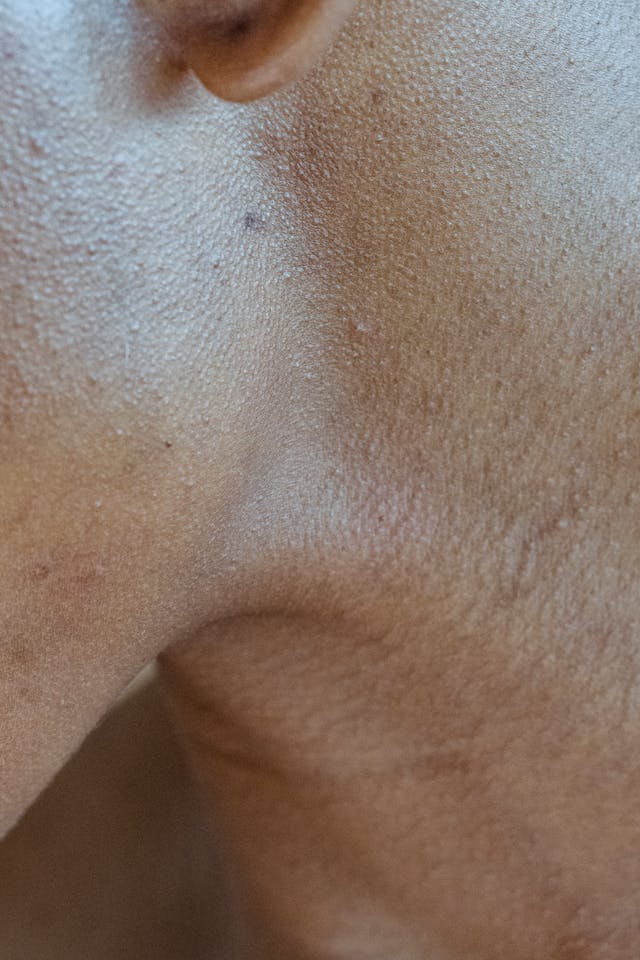 Recovery from esophageal surgery depends on the type of procedure performed and the patient’s overall health. Minimally invasive procedures like laparoscopic fundoplication or Heller myotomy typically involve shorter hospital stays, with patients often returning home within a few days. Full recovery may take several weeks, during which patients may need to follow a special diet to aid healing.
Recovery from esophageal surgery depends on the type of procedure performed and the patient’s overall health. Minimally invasive procedures like laparoscopic fundoplication or Heller myotomy typically involve shorter hospital stays, with patients often returning home within a few days. Full recovery may take several weeks, during which patients may need to follow a special diet to aid healing.
For more complex procedures like esophagectomy, recovery may take longer. Patients may require a hospital stay of several weeks, followed by months of rehabilitation. Dietary changes, physical therapy, and follow-up care are essential to ensure proper recovery and monitor for any complications.
Choosing the Right Surgeon for Esophageal Surgery
When considering esophageal surgery, it’s crucial to choose a surgeon with specialized expertise in treating esophageal conditions. Surgeons with experience in both traditional and minimally invasive techniques can offer personalized treatment plans tailored to each patient’s unique needs.
At Lenox Hill Surgeons, our team is highly skilled in treating a wide range of esophageal conditions using the latest surgical advancements. Whether you’re dealing with GERD, achalasia, esophageal cancer, or another condition, our surgeons provide comprehensive care with a focus on patient safety and optimal outcomes.
For expert consultation and surgical treatment, contact Lenox Hill Surgeons:
LENOX HILL SURGEONS
155 East 76th Street
Suite 1C
New York, NY 10021
646-846-1136
lenoxhillsurgeons@gmail.com
Visit our website for more information: https://lenoxhillsurgeons.com/
Digestive Disorders and General Surgery: Treatment Options and Success Stories
What are some examples of digestive disorders and general surgery that can treat them? Digestive disorders can significantly impact a person’s quality of life, leading to symptoms like pain, discomfort, and difficulty with nutrition and digestion. While many digestive conditions can be managed with medication and lifestyle changes, some require surgical intervention to resolve the underlying issue and improve overall health. Advances in general surgery have allowed for more effective and less invasive treatment options, offering patients relief from chronic symptoms and a chance at a healthier, symptom-free life.
In this article, we will explore the most common digestive disorders that require surgical intervention, the treatment options available, and some success stories that illustrate the life-changing impact of general surgery.

Common Digestive Disorders Requiring Surgery
Digestive disorders are varied in their origin and severity. Here are some of the most common conditions that may necessitate surgical treatment:
1. Gallbladder Disease
Gallbladder disease, particularly the presence of gallstones, is a common digestive issue. Gallstones can block the bile ducts, causing intense pain and inflammation, a condition known as cholecystitis. In many cases, the best course of treatment is gallbladder removal surgery, or cholecystectomy, to prevent recurrent symptoms and complications.
Success Story Example
A 45-year-old patient experienced chronic pain after meals due to gallstones. After a minimally invasive laparoscopic cholecystectomy, she was able to return to her daily activities without pain and maintain a normal diet.
2. Gastroesophageal Reflux Disease (GERD)
GERD occurs when stomach acid frequently backs up into the esophagus, causing discomfort and, over time, damage to the esophageal lining. For patients whose GERD is not managed with medication, surgery may be necessary. Fundoplication, where the top part of the stomach is wrapped around the lower esophagus, strengthens the valve between the esophagus and stomach, reducing reflux.
Success Story Example
A young professional in her 30s struggled with acid reflux that affected her sleep and daily functioning. After undergoing laparoscopic fundoplication, her symptoms were completely resolved, and she no longer required daily medication.
3. Hernias
A hernia occurs when an organ pushes through a weakened area in the muscle or tissue, often in the abdominal wall. In some cases, hernias can cause pain, obstruction, or other serious complications. Surgery is the definitive treatment for hernias, particularly inguinal hernias, which occur in the groin. Hernia repairs can be performed via open surgery or using minimally invasive laparoscopic techniques.
Success Story Example
A patient with a recurrent inguinal hernia that limited his ability to exercise underwent robotic-assisted hernia repair. The surgery allowed him to recover faster, and within weeks he was back to his normal workout routine, free of pain and discomfort.
4. Crohn’s Disease and Ulcerative Colitis
Crohn’s disease and ulcerative colitis are inflammatory bowel diseases (IBD) that cause inflammation in the digestive tract. In severe cases, these conditions can lead to complications such as bowel obstructions, perforations, or the development of fistulas. Surgery, such as bowel resection, may be required to remove damaged portions of the intestine and restore normal digestive function.
Success Story Example
A 28-year-old woman with severe Crohn’s disease underwent a bowel resection after multiple hospitalizations due to obstructions. Post-surgery, she reported a dramatic improvement in her quality of life and was able to achieve remission, maintaining an active lifestyle without flare-ups.

5. Diverticulitis
Diverticulitis occurs when small, bulging pouches (diverticula) in the colon become inflamed or infected. Mild cases can be managed with antibiotics, but recurring or severe cases may require surgery. Colectomy, the removal of the affected portion of the colon, is often performed to prevent future episodes of diverticulitis.
Success Story Example
After years of battling recurrent diverticulitis, a patient opted for elective surgery to remove the affected section of the colon. Following the surgery, he remained symptom-free and was able to enjoy a fiber-rich diet without fear of future flare-ups.
Minimally Invasive Surgical Techniques
One of the greatest advancements in general surgery has been the development of minimally invasive techniques. Procedures such as laparoscopy and robotic-assisted surgery have transformed how many digestive disorders are treated, offering patients significant benefits, including:
- Smaller incisions
- Less pain
- Reduced risk of infection
- Faster recovery times
- Minimal scarring
These techniques are particularly beneficial for surgeries involving the gastrointestinal tract, as they allow surgeons to perform complex operations with precision, while minimizing trauma to the surrounding tissues.
The Importance of Early Surgical Intervention
For many digestive disorders, early surgical intervention can prevent complications and improve outcomes. Delaying surgery in cases of severe GERD, gallbladder disease, or inflammatory bowel disease can lead to worsened symptoms, more complex surgeries, and prolonged recovery periods. Consulting with a general surgeon early in the course of the disease can provide patients with a comprehensive understanding of their condition and treatment options, including whether surgery is the best choice.
Post-Surgical Recovery and Success
The recovery process after general surgery for digestive disorders depends on the complexity of the procedure and the individual’s overall health. Minimally invasive procedures typically allow for shorter hospital stays and faster recovery times. Many patients are able to return to normal activities within a few weeks, and dietary restrictions are usually temporary.
A key component of post-surgical recovery is follow-up care, where patients may receive dietary advice, exercise recommendations, and guidance on managing any lingering symptoms. With appropriate surgical intervention and recovery support, many patients experience significant improvements in their quality of life, often returning to a normal routine free of pain and discomfort.
Digestive Disorders and General Surgery: Conclusion
Digestive disorders can have a profound impact on a person’s well-being, but with the right surgical treatment, patients can regain control of their health and experience long-lasting relief. From minimally invasive techniques for GERD and gallbladder disease to complex surgeries for conditions like Crohn’s disease and esophageal cancer, modern general surgery offers a range of effective treatment options.
If you’re considering surgery for a digestive disorder, consult with a team of highly trained general surgeons who specialize in these procedures to explore the best treatment options for your specific condition.
Contact Lenox Hill Surgeons today to schedule a consultation and learn more about how their expertise can help you on the path to recovery.
Contact Information
LENOX HILL SURGEONS
155 East 76th Street
Suite 1C
New York, NY 10021
646-846-1136
Stomach Surgery: Surgical Procedures for Gastric Disorders
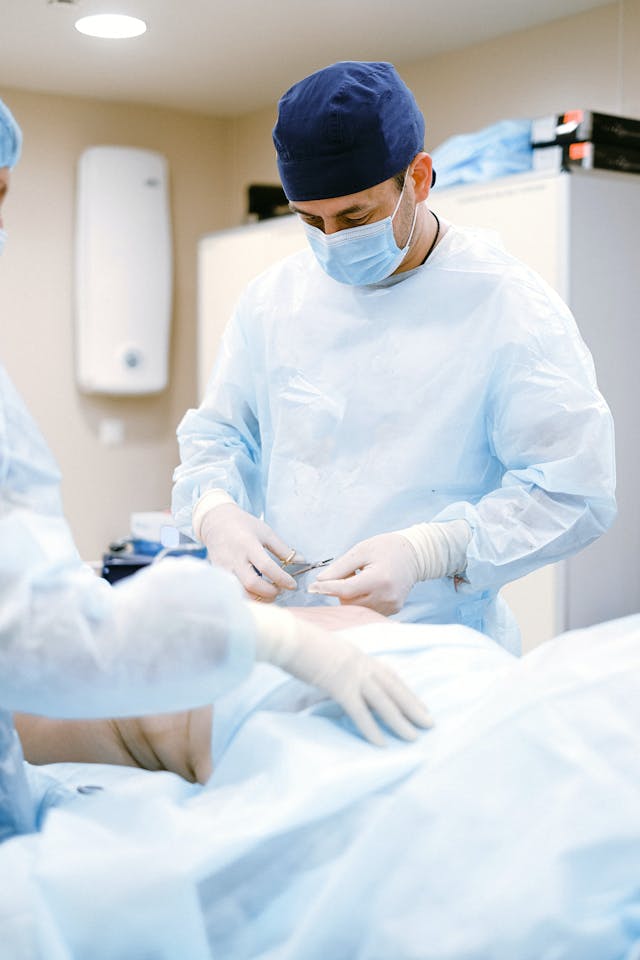 Stomach surgery is an essential treatment option for various gastric disorders, especially when non-surgical treatments such as medications and lifestyle modifications are not sufficient. Gastric disorders can significantly impact a person’s quality of life, causing discomfort, pain, and digestive issues. Fortunately, advancements in general surgery offer a range of effective surgical solutions for addressing these disorders.
Stomach surgery is an essential treatment option for various gastric disorders, especially when non-surgical treatments such as medications and lifestyle modifications are not sufficient. Gastric disorders can significantly impact a person’s quality of life, causing discomfort, pain, and digestive issues. Fortunately, advancements in general surgery offer a range of effective surgical solutions for addressing these disorders.
In this article we will explore common gastric disorders that may require surgery, the different types of stomach surgery, and what patients can expect during recovery.
Common Gastric Disorders Requiring Surgery
There are several stomach-related conditions that may require surgical intervention when conservative treatments fail. Some of the most common gastric disorders include:
1. Stomach Cancer (Gastric Cancer)
Stomach cancer occurs when malignant cells form in the lining of the stomach. Symptoms often include persistent stomach pain, nausea, unexplained weight loss, and difficulty swallowing. Early detection is crucial, and surgery is often the primary treatment option for removing cancerous tissues.
2. Peptic Ulcer Disease
Peptic ulcers are open sores that develop on the inner lining of the stomach or the small intestine due to excessive stomach acid. While most ulcers can be treated with medications, severe cases that lead to bleeding, perforation, or obstruction may require surgical intervention to repair the damage and prevent further complications.
3. Gastroesophageal Reflux Disease (GERD)
GERD is a chronic digestive disorder where stomach acid frequently flows back into the esophagus, causing discomfort, heartburn, and possible damage to the esophageal lining. In severe or long-standing cases of GERD, surgery may be required to prevent further complications.
4. Gastroparesis
Gastroparesis is a condition where the stomach muscles do not function properly, leading to delayed stomach emptying. This can result in nausea, vomiting, and malnutrition. Surgery may be necessary in cases where gastroparesis severely affects a patient’s quality of life and other treatments have been ineffective.
5. Obesity (Morbid Obesity)
For individuals with morbid obesity, weight loss surgery (also known as bariatric surgery) may be recommended to help achieve and maintain a healthy weight. This can also help manage or resolve related conditions like type 2 diabetes, hypertension, and sleep apnea.
Types of Stomach Surgery
There are several surgical options for treating stomach-related disorders. The choice of surgery depends on the specific condition, the severity of the disease, and the overall health of the patient. Some of the most common types of stomach surgery include:
1. Gastrectomy
A gastrectomy involves the partial or complete removal of the stomach and is most commonly used to treat stomach cancer. There are three main types of gastrectomy:
- Partial Gastrectomy: In this procedure, only the cancerous part of the stomach is removed, and the remaining portion is reconnected to the small intestine.
- Total Gastrectomy: The entire stomach is removed, and the esophagus is connected directly to the small intestine.
- Sleeve Gastrectomy: This procedure, often used in bariatric surgery, involves removing a large portion of the stomach, leaving behind a tube-like structure that limits food intake.
2. Fundoplication
Fundoplication is a surgical procedure often used to treat severe GERD. During the procedure, the top of the stomach is wrapped around the lower esophagus to strengthen the esophageal sphincter and prevent acid reflux. This surgery can be performed laparoscopically, offering the benefits of smaller incisions, less pain, and a faster recovery.
3. Bariatric Surgery (Weight Loss Surgery)
Bariatric surgery is performed to help patients with morbid obesity achieve significant weight loss and manage obesity-related health conditions. The most common types of bariatric surgery include:
- Gastric Bypass (Roux-en-Y): In this procedure, a small stomach pouch is created, and a portion of the small intestine is rerouted to bypass the majority of the stomach and the first section of the small intestine. This limits food intake and calorie absorption.
– Sleeve Gastrectomy: As mentioned earlier, this procedure involves removing a large portion of the stomach, creating a smaller stomach “sleeve” that restricts food intake. - Adjustable Gastric Banding: A silicone band is placed around the upper portion of the stomach to create a small stomach pouch, limiting how much food can be eaten at one time.
4. Pyloroplasty
Pyloroplasty is a procedure used to treat conditions like gastroparesis by widening the pylorus, the passage between the stomach and the small intestine. This allows for easier passage of food from the stomach to the intestines, improving digestion and reducing symptoms like nausea and vomiting.
5. Vagotomy
A vagotomy is a surgical procedure where the vagus nerve, which stimulates acid production in the stomach, is cut to reduce acid secretion. This surgery is sometimes performed in conjunction with a gastrectomy to treat peptic ulcers that are resistant to other treatments.
Minimally Invasive Surgical Techniques
Many of the procedures mentioned above can be performed using minimally invasive techniques, such as laparoscopy or robotic-assisted surgery. These techniques offer several advantages over traditional open surgery, including:
- Smaller incisions and less scarring
- Reduced post-operative pain
- Shorter hospital stays
- Faster recovery times
- Lower risk of infection
For patients who qualify, minimally invasive surgery can provide excellent outcomes with fewer complications and a quicker return to daily activities.
Recovery After Stomach Surgery
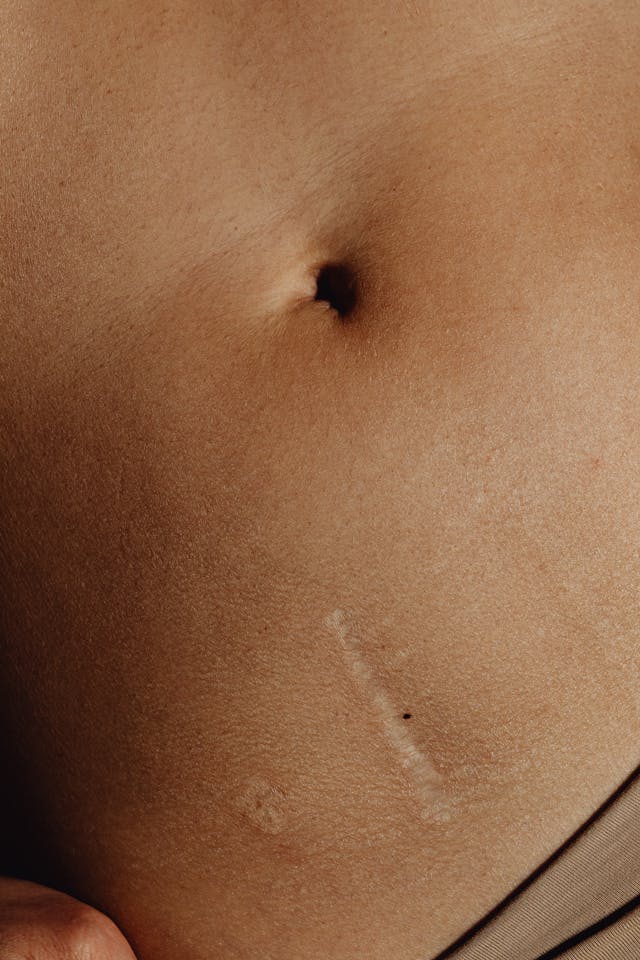
Recovery from stomach surgery varies depending on the specific procedure and the patient’s overall health. In general, patients who undergo minimally invasive procedures tend to recover more quickly than those who have traditional open surgery. Here are some general guidelines for what to expect during recovery:
- Hospital Stay: Most patients will need to stay in the hospital for a few days after surgery. During this time, they will be monitored for complications and receive pain management and nutrition through an IV.
- Dietary Changes: After stomach surgery, patients will need to follow a specific diet, often starting with liquids and gradually transitioning to solid foods. A nutritionist will work with patients to create a diet plan that supports healing and meets nutritional needs.
- Activity Restrictions: Patients will be encouraged to move around soon after surgery to prevent blood clots, but strenuous activities and heavy lifting will need to be avoided for several weeks.
- Follow-Up Care: Regular follow-up appointments with the surgeon are essential to monitor healing, address any complications, and ensure that the stomach is functioning properly.
Stomach Surgery & Surgical Procedures for Gastric Disorders: Conclusion
Stomach surgery can be a life-changing intervention for those suffering from chronic gastric disorders. Whether it’s addressing cancer, severe acid reflux, peptic ulcers, or obesity, surgical treatments can provide lasting relief and improve quality of life. With the availability of minimally invasive techniques, patients can now experience faster recovery times and fewer complications.
If you’re experiencing persistent gastric issues or have been diagnosed with a condition that may require surgery, it’s essential to consult with an experienced surgeon who specializes in stomach surgery.
For more information or to schedule a consultation, contact the expert surgeons at Lenox Hill Surgeons. They provide personalized treatment plans using the latest surgical advancements to help patients achieve the best possible outcomes.
Contact Information
LENOX HILL SURGEONS
155 East 76th Street
Suite 1C
New York, NY 10021
646-846-1136
lenoxhillsurgeons@gmail.com
Minimally Invasive Surgery: Benefits and Procedures
Minimally invasive surgery (MIS) has revolutionized the field of surgery, offering numerous benefits over traditional open surgery. This guide explores the advantages and common procedures associated with minimally invasive techniques.
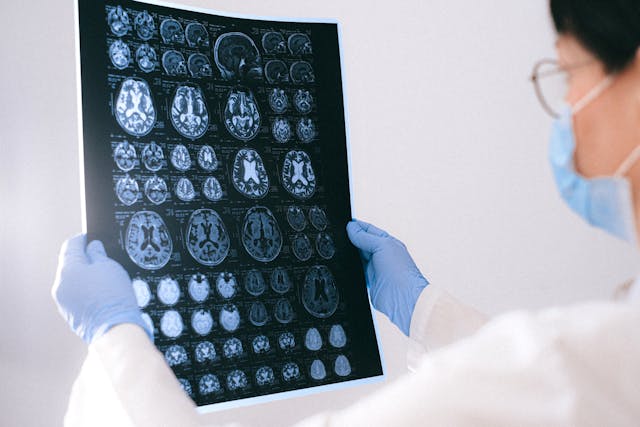
Benefits of Minimally Invasive Surgery
Minimally invasive surgery involves smaller incisions compared to traditional surgery, which leads to several key benefits:
- Reduced Pain: Smaller incisions result in less tissue damage, leading to decreased postoperative pain and discomfort.
- Shorter Recovery Time: Patients typically experience faster recovery times, allowing them to return to normal activities sooner.
- Lower Risk of Infection: The smaller incisions used in MIS reduce the risk of infection and other complications.
- Minimal Scarring: With less tissue disruption, patients benefit from minimal scarring and improved cosmetic outcomes.
- Reduced Blood Loss: MIS techniques often involve less blood loss during surgery, reducing the need for blood transfusions.
Common Minimally Invasive Procedures
Several surgical procedures can be performed using minimally invasive techniques. Here are some of the most common ones:
Laparoscopic Surgery
Laparoscopic surgery uses a thin, flexible tube with a camera and light at the end (a laparoscope) to view the inside of the abdomen. Surgeons make small incisions to insert surgical instruments and perform procedures such as gallbladder removal, hernia repair, and appendectomy.
Arthroscopic Surgery
Arthroscopic surgery is used to diagnose and treat joint problems. A small camera, called an arthroscope, is inserted into the joint through a tiny incision. This technique is commonly used for procedures on the knee, shoulder, elbow, and wrist.
Robotic-Assisted Surgery
Robotic-assisted surgery involves the use of robotic systems to enhance the precision and control of the surgeon. The surgeon operates the robot from a console, allowing for highly accurate movements. This technique is often used for complex procedures such as prostate surgery, hysterectomy, and cardiac surgery.
Endoscopic Surgery
Endoscopic surgery involves using an endoscope, a flexible tube with a camera, to access internal organs and tissues. This technique is commonly used for gastrointestinal procedures, such as removing polyps from the colon or treating conditions like gastroesophageal reflux disease (GERD).
Patient Eligibility for Minimally Invasive Surgery
Not all patients are candidates for minimally invasive surgery. Factors such as the type and severity of the condition, patient health, and previous surgical history play a role in determining eligibility. A thorough evaluation by a qualified surgeon is essential to decide the best surgical approach.
Preparing for Minimally Invasive Surgery
Preparation for MIS involves several steps, including preoperative evaluations, discussing medication adjustments, and understanding the procedure and recovery expectations. Patients should follow all preoperative instructions provided by their surgeon to ensure the best possible outcomes.
Postoperative Care and Recovery
Postoperative care following MIS is typically less intensive than traditional surgery. Patients can expect shorter hospital stays, quicker return to normal activities, and less postoperative pain. However, it is crucial to follow the surgeon’s postoperative instructions to promote optimal healing and prevent complications.
Minimally Invasive Surgery: Conclusion
Minimally invasive surgery offers numerous benefits, including reduced pain, shorter recovery times, lower risk of infection, minimal scarring, and reduced blood loss. Understanding the procedures and preparing adequately can help ensure a successful outcome.
For expert guidance on minimally invasive surgery and to determine if you are a candidate, contact Lenox Hill Surgeons.
LENOX HILL SURGEONS
155 East 76th Street
Suite 1C
New York, NY 10021
Phone: 646-846-1136
Email: lenoxhillsurgeons@gmail.com
Post-Surgery Recovery Tips: How to Heal Faster
Post-surgery recovery is a critical phase that requires careful attention and adherence to medical advice. Here are some essential tips to help you heal faster and more effectively.
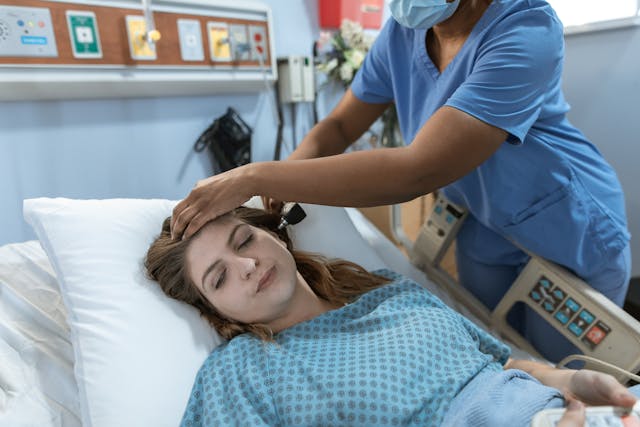
Follow Postoperative Instructions
Adhering to your surgeon’s postoperative instructions is crucial for a smooth recovery. These guidelines are tailored to your specific surgery and include advice on wound care, medication, activity levels, and follow-up appointments.
Manage Pain Effectively
Pain management is essential for recovery. Take prescribed pain medications as directed and use additional methods like ice packs, elevation, and rest to alleviate discomfort. Discuss any pain management concerns with your healthcare provider.
Maintain a Healthy Diet
Nutrition plays a vital role in healing. Eat a balanced diet rich in proteins, vitamins, and minerals to support tissue repair and boost your immune system. Stay hydrated by drinking plenty of water.
Stay Active, but Rest Appropriately
Light physical activity, such as short walks, can promote blood circulation and prevent complications like blood clots. However, avoid strenuous activities that might strain your surgical site. Follow your surgeon’s advice on when and how to resume normal activities.
Monitor for Signs of Complications
Watch for signs of complications, such as increased pain, swelling, redness, fever, or discharge from the surgical site. Early detection and prompt communication with your healthcare provider can prevent minor issues from becoming serious.
Attend Follow-Up Appointments
Follow-up appointments allow your surgeon to monitor your progress and address any concerns. Attend all scheduled visits and discuss any symptoms or issues you’re experiencing.
Practice Good Wound Care
Proper wound care is essential to prevent infection and promote healing. Keep the surgical site clean and dry, and follow your surgeon’s instructions for changing dressings. Avoid soaking the wound in water until it is fully healed.
Get Plenty of Rest
Rest is vital for recovery. Ensure you get adequate sleep and take naps as needed. Resting helps your body repair tissues and regain strength.
Avoid Smoking and Alcohol
Smoking and alcohol can impair the healing process. Avoid these substances during your recovery period to ensure optimal healing.
Stay Positive and Patient
Recovery takes time, and maintaining a positive attitude can help you stay motivated and adhere to your recovery plan. Be patient with yourself and allow your body the time it needs to heal fully.
Post-Surgery Recovery: Conclusion
By following these post-surgery recovery tips, you can enhance your healing process and reduce the risk of complications. Always communicate with your healthcare provider about your progress and any concerns you may have.
For personalized post-surgery care and support, contact the specialists at Lenox Hill Surgeons. Our highly experienced surgical team is dedicated to providing the highest quality care throughout your recovery journey.
Contact Information:
LENOX HILL SURGEONS
155 East 76th Street
Suite 1C
New York, NY 10021
646-846-1136
lenoxhillsurgeons@gmail.com
https://lenoxhillsurgeons.com/
Preparing for Surgery: A Patient’s Guide
Preparing for surgery can be a daunting experience, but proper preparation can help ensure a smoother process and recovery. Here’s a comprehensive guide to help you get ready for your surgical procedure.
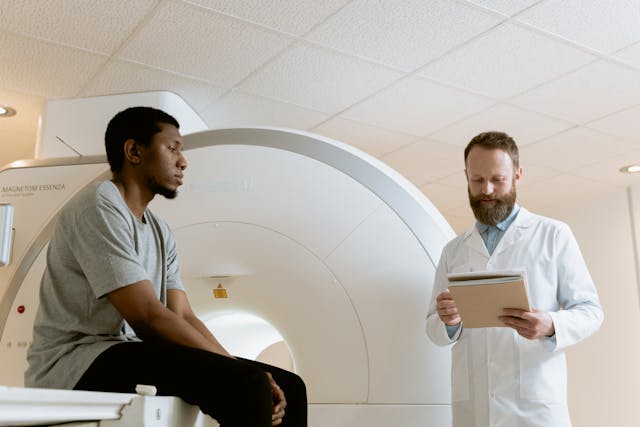
Preparing for Surgery
Preoperative Instructions
Follow all preoperative instructions provided by your surgeon. These may include dietary restrictions, medication adjustments, and fasting requirements. Make sure to understand and adhere to these guidelines to avoid any complications on the day of surgery.
Medical Evaluations and Tests
Your surgeon may require several medical evaluations and tests before the surgery. These could include blood tests, imaging studies, and EKGs to ensure you are fit for surgery. Attend all pre-surgical appointments to address any potential health issues.
Discuss Medications and Supplements
Inform your surgeon about all medications and supplements you are taking. Some substances can interfere with anesthesia or increase bleeding risk. Your surgeon may advise you to stop taking certain medications before surgery.
Prepare Your Home
Arrange your home to accommodate your post-surgery needs. Set up a comfortable recovery area with easy access to essentials. Stock up on groceries, medications, and any necessary medical supplies.
Arrange Transportation and Support
You will need someone to drive you home after the surgery and possibly assist you for the first few days. Arrange for a friend or family member to provide transportation and support during your recovery.
Follow Fasting Guidelines
If instructed to fast before surgery, follow the guidelines precisely. Typically, this means no food or drink after midnight on the night before your surgery. Fasting reduces the risk of complications from anesthesia.
Pack a Hospital Bag
Pack a small bag with essentials you might need during your hospital stay. Include items such as comfortable clothing, toiletries, identification, insurance information, and any necessary medical documents.
Understand the Procedure and Risks
Have a thorough discussion with your surgeon about the procedure, including the expected outcomes and potential risks. Understanding what to expect can help alleviate anxiety and ensure you are fully informed.
Post-Surgery Recovery Plan
Discuss your post-surgery recovery plan with your surgeon. Know what activities you can and cannot do, how to manage pain, and signs of potential complications. Follow all postoperative instructions carefully to promote healing.
Stay Informed and Ask Questions
Don’t hesitate to ask your surgeon or healthcare team any questions you may have about the procedure or recovery. Being informed helps you feel more in control and reduces anxiety.
Preparing for Surgery: Conclusion
Proper preparation is key to a successful surgery and smooth recovery. By following these guidelines, you can help ensure that you are physically and mentally ready for your procedure.
For personalized surgical care and comprehensive preoperative guidance, contact the specialists at Lenox Hill Surgeons in New York City. Our experienced team is dedicated to providing the highest quality care and support throughout your surgical journey.
LENOX HILL SURGEONS
155 East 76th Street
Suite 1C
New York, NY 10021
646-846-1136
lenoxhillsurgeons@gmail.com
https://lenoxhillsurgeons.com/
Top 10 Signs You Might Need Surgery
 What are the top 10 signs you might need surgery? Recognizing the signs that you might need surgery is crucial for timely intervention and effective treatment. Here are the top things to watch for.
What are the top 10 signs you might need surgery? Recognizing the signs that you might need surgery is crucial for timely intervention and effective treatment. Here are the top things to watch for.
Top 10 Signs You Might Need Surgery
1. Chronic Pain
Persistent, severe pain that doesn’t improve with medication or other treatments may indicate a need for surgery. Conditions such as arthritis, herniated discs, and chronic back pain often require surgical intervention when conservative treatments fail to provide relief.
2. Recurring Infections
Frequent infections, especially in the same area, can signal an underlying issue that might require surgical intervention. For example, recurring urinary tract infections could indicate a structural problem in the urinary system, while chronic sinus infections might necessitate sinus surgery.
3. Difficulty Breathing
Breathing problems that are not resolved with medical treatment could necessitate surgery to address issues like blocked airways, lung conditions, or heart problems. Procedures such as septoplasty for a deviated septum or surgery for obstructive sleep apnea can significantly improve breathing.
4. Digestive Problems
Chronic digestive issues such as severe acid reflux, gallstones, or bowel obstructions often need surgical solutions. For instance, persistent gastroesophageal reflux disease (GERD) may require a procedure like fundoplication, while gallstones might necessitate cholecystectomy.
5. Unexplained Weight Loss
Significant, unexplained weight loss can be a symptom of serious conditions that may require surgical exploration and treatment. It could indicate cancers, endocrine disorders, or gastrointestinal diseases that need surgical intervention for diagnosis or treatment.
6. Blood in Stool or Urine
The presence of blood in your stool or urine could indicate a serious condition like cancer, kidney stones, or ulcers, requiring surgical intervention. Colonoscopy for polyps or tumors and cystoscopy for bladder issues are common procedures in such cases.
7. Persistent Fever
A fever that doesn’t subside with medication could signal an infection or other condition needing surgical treatment. Persistent fever might indicate an abscess, appendicitis, or other infections that require drainage or removal through surgery.
8. Non-Healing Wounds
Wounds that do not heal properly might need surgical debridement or other interventions to prevent infection and promote healing. Conditions such as diabetic ulcers or pressure sores often require surgical attention to ensure proper recovery.
9. Lumps or Growths
Unexplained lumps or growths, especially if they are growing or changing, should be evaluated by a surgeon for potential removal. These could be benign tumors, cysts, or malignant growths that need to be excised to prevent further complications.
10. Traumatic Injuries
Severe injuries from accidents or falls often require surgical repair to restore function and prevent complications. Broken bones, internal bleeding, and damaged organs are some of the conditions that might necessitate immediate surgical intervention.
Importance of Timely Surgical Intervention
Timely surgical intervention is essential for preventing complications and improving outcomes. Delaying surgery can lead to the worsening of the condition and may reduce the effectiveness of the treatment. It is important to consult with an experienced general or specialty surgeon as soon as you notice any of these signs to determine the best course of action.
Top 10 Signs You Might Need Surgery: Conclusion
Recognizing these signs can help you seek timely surgical intervention, leading to better health outcomes. If you are experiencing any of these symptoms, consult with a healthcare professional for a proper diagnosis and treatment plan.
If you need expert surgical care or have questions about potential surgery, contact the specialists at Lenox Hill Surgeons. Our experienced team is dedicated to providing the highest quality care.
LENOX HILL SURGEONS
155 East 76th Street
Suite 1C
New York, NY 10021
646-846-1136
lenoxhillsurgeons@gmail.com
https://lenoxhillsurgeons.com/
Understanding the Role of a General Surgeon: What You Need to Know
Understanding the role of a general surgeon is crucial for anyone facing surgery or seeking to understand the broad field of general surgery. General surgeons are highly trained medical professionals who perform a variety of surgical procedures, often involving critical and life-saving operations.
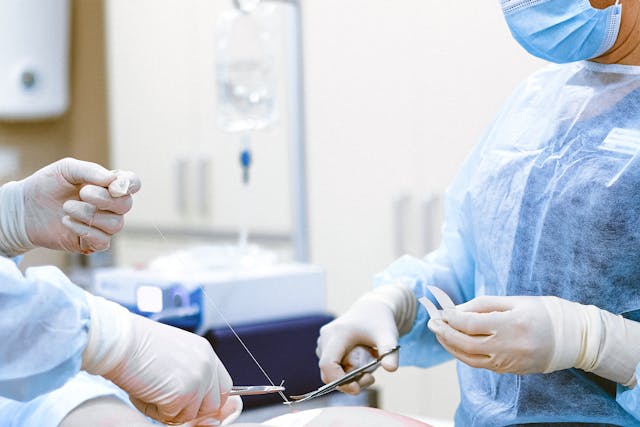
What Does a General Surgeon Do?
General surgeons are skilled in a wide range of surgical procedures. They diagnose and treat various conditions affecting almost any area of the body. These include surgeries related to the digestive tract, abdomen, breast, skin, and soft tissues. General surgeons also manage trauma, surgical emergencies, and care for critically ill patients.
Common Procedures Performed by General Surgeons
Some common procedures that general surgeons perform include appendectomies, hernia repairs, gallbladder removals, and colon surgeries. They also handle more complex surgeries such as cancer resections and bariatric surgery for weight loss. General surgeons are trained to handle both routine and emergency procedures with precision and expertise.
The Importance of Preoperative and Postoperative Care
General surgeons are involved in both preoperative and postoperative care. Before surgery, they conduct thorough evaluations, including physical exams and diagnostic tests, to determine the best course of action. After surgery, they monitor the patient’s recovery, manage any complications, and ensure proper wound care and pain management.
Trauma and Emergency Surgery
One of the critical roles of a general surgeon is performing trauma and emergency surgery. General surgeons are often on the front lines in emergency rooms, handling cases such as traumatic injuries, perforated ulcers, and acute appendicitis. Their ability to perform under pressure and make quick, informed decisions can be life-saving.
Collaboration with Other Specialists
General surgeons frequently collaborate with other medical specialists to provide comprehensive care. They may work alongside oncologists, gastroenterologists, and radiologists to develop and execute treatment plans for complex conditions. This multidisciplinary approach ensures that patients receive the most effective and coordinated care possible.
Advancements in General Surgery
The field of general surgery is continually evolving with advancements in technology and surgical techniques. Minimally invasive surgery, including laparoscopic and robotic surgery, has become more common. These techniques offer benefits such as smaller incisions, reduced pain, and quicker recovery times. General surgeons stay updated with the latest advancements to provide the best care for their patients.
Understanding the Role of a General Surgeon: Conclusion:
General surgeons play a vital role in the medical field, performing a wide range of procedures that are essential for diagnosing and treating various conditions. Their expertise in preoperative and postoperative care, trauma surgery, and collaboration with other specialists makes them indispensable in the healthcare system.
If you need expert surgical care or have questions about a surgical procedure, contact the specialists at Lenox Hill Surgeons. Our experienced team is dedicated to providing the highest quality care.
LENOX HILL SURGEONS
155 East 76th Street
Suite 1C
New York, NY 10021
646-846-1136
lenoxhillsurgeons@gmail.com
Patient Testimonials for Lenox Hill Surgeons
Liver Surgery: Procedures for Liver Diseases and Tumors
In this article, we will explore common liver conditions, their symptoms, and the surgical procedures for liver diseases and tumors. The liver is a vital organ responsible for numerous functions, including detoxification, metabolism, and the production of essential proteins. However, various conditions can affect the liver, ranging from benign liver cysts to liver tumors. When conservative treatments fail to provide relief or when liver tumors require intervention, liver surgery may be necessary. At Lenox Hill Surgeons, a trusted general surgery practice in New York City, our expert surgeons specialize in liver surgery, offering advanced procedures for liver diseases and tumors.
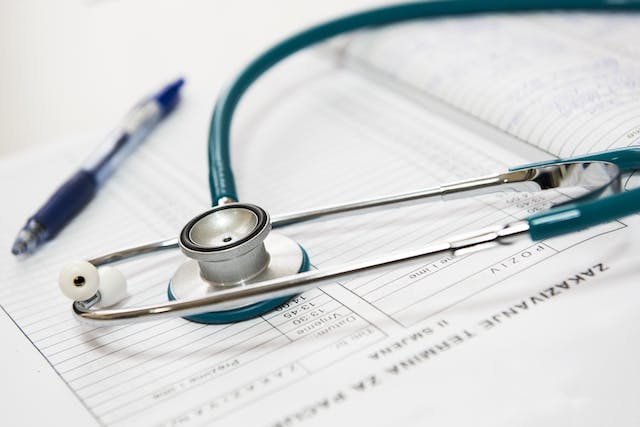
Common Liver Diseases and Tumors
The liver can be affected by a range of diseases and tumors, including:
1. Hepatitis:
Hepatitis is an inflammation of the liver often caused by viral infections, such as hepatitis A, B, or C. Chronic hepatitis can lead to liver damage and the development of liver diseases.
2. Liver Cirrhosis:
Liver cirrhosis is a progressive scarring of the liver due to long-term damage, typically caused by chronic hepatitis, alcohol abuse, or certain metabolic diseases. Cirrhosis can impair liver function and lead to complications.
3. Liver Cysts:
Liver cysts are fluid-filled sacs that can develop within the liver. Most liver cysts are benign and do not require treatment. However, large or symptomatic cysts may require surgical intervention.
4. Liver Tumors:
Liver tumors can be either benign (non-cancerous) or malignant (cancerous). Benign liver tumors, such as hemangiomas or adenomas, may require surgical removal if they cause symptoms or pose a risk. Malignant liver tumors, such as hepatocellular carcinoma or metastatic tumors, often necessitate surgical treatment, along with other therapies.
Surgical Procedures for Liver Diseases and Tumors
Liver surgery encompasses various procedures, depending on the specific condition and its severity. Some common surgical interventions for liver diseases and tumors include:
1. Liver Resection:
Liver resection involves the surgical removal of a portion of the liver affected by tumors or diseases. This procedure aims to remove the diseased or cancerous tissue while preserving sufficient healthy liver tissue.
2. Liver Transplantation:
Liver transplantation is performed in cases of end-stage liver disease or advanced liver cancer. It involves replacing the diseased liver with a healthy liver from a deceased or living donor.
3. Ablation Therapy:
Ablation therapy utilizes techniques such as radiofrequency ablation, microwave ablation, or cryoablation to destroy tumors within the liver. These minimally invasive procedures can be effective for small liver tumors.
4. Biliary Surgery:
Biliary surgery addresses conditions affecting the bile ducts, which carry bile from the liver to the small intestine. Procedures such as bile duct repair, bile duct resection, or the creation of biliary bypasses may be necessary to restore proper bile flow.
Expert Liver Surgery Services at Lenox Hill Surgeons
At Lenox Hill Surgeons, we understand the complexity of liver diseases and tumors, and our skilled team of surgeons is committed to providing the highest level of care. We utilize advanced surgical techniques and individualized treatment plans to ensure optimal outcomes for our patients.
Contact us today to schedule a consultation and benefit from the expertise of our renowned surgeons.
LENOX HILL SURGEONS
155 East 76th Street
Suite 1C
New York, NY 10021
646-846-1136
lenoxhillsurgeons@gmail.com
Robotic Assisted General Surgery: Advancements in Manhattan
In this comprehensive article, we will explore the benefits of robotic assisted general surgery and how it is transforming the landscape of surgical procedures. Advancements in surgical technology have revolutionized the field of general surgery, providing surgeons with innovative tools and techniques to deliver improved outcomes for patients. One such advancement is robotic-assisted surgery, which has gained popularity in recent years. At Lenox Hill Surgeons, a renowned general surgery practice in Manhattan, we embrace cutting-edge technologies, including robotic-assisted surgery, to offer our patients the highest level of surgical care.
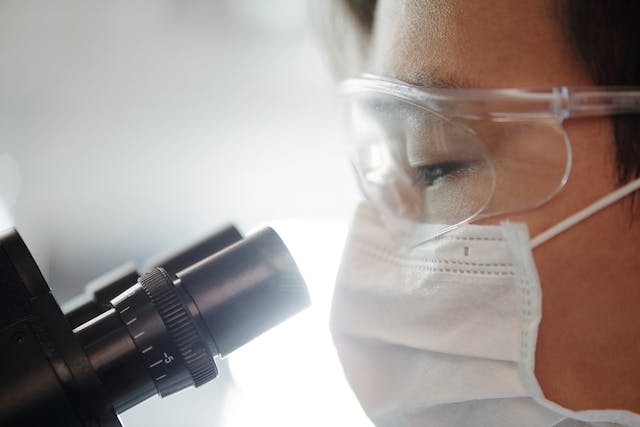
What is Robotic Assisted General Surgery?
Robotic assisted general surgery involves the use of robotic technology to assist surgeons during surgical procedures. It combines the precision and dexterity of robotic systems with the expertise of the surgeon, allowing for enhanced visualization, greater control, and improved surgical outcomes. The da Vinci Surgical System is one of the most widely used robotic systems in general surgery, enabling surgeons to perform complex procedures with enhanced accuracy and efficiency.
The Benefits of Robotic Assisted General Surgery
Robotic assisted general surgery offers several advantages over traditional open surgery and even laparoscopic surgery:
1. Enhanced Precision:
Robotic systems provide high-definition, magnified 3D visualization of the surgical site. This level of precision allows surgeons to navigate intricate anatomical structures with improved accuracy, reducing the risk of damage to surrounding tissues.
2. Greater Dexterity:
Robotic assisted surgery offers increased range of motion and flexibility compared to human hands alone. The robotic arms can rotate 360 degrees and perform complex maneuvers with precision, enabling surgeons to access hard-to-reach areas more easily.
3. Reduced Trauma:
The minimally invasive nature of robotic-assisted surgery results in smaller incisions, leading to less tissue trauma, reduced post-operative pain, and minimal scarring. Patients often experience faster recovery times and a shorter hospital stay.
4. Improved Visualization:
The high-definition 3D visualization provided by robotic systems allows surgeons to see intricate details of the surgical site more clearly. This enhances their ability to identify and address potential complications, leading to improved surgical outcomes.
5. Increased Safety:
Robotic systems incorporate advanced technologies, such as real-time imaging and motion scaling, that enhance patient safety during surgery. Surgeons can precisely control movements, reducing the risk of accidental tissue damage.
Robotic Assisted Procedures in General Surgery
Robotic-assisted surgery is utilized in various general surgical procedures. Some common examples include:
1. Hernia Repair:
Robotic technology allows surgeons to repair different types of hernias with improved precision and control. The robotic system assists in mesh placement, suture placement, and other complex maneuvers required during hernia repair surgery.
2. Gallbladder Surgery:
Robotic assisted techniques offer enhanced visualization and dexterity for gallbladder removal surgery. Surgeons can perform cholecystectomy with smaller incisions, reducing post-operative pain and scarring.
3. Colorectal Surgery:
Robotic systems enable surgeons to perform intricate colorectal procedures, such as rectal resection and colon resection, with enhanced precision and control. This approach may result in faster recovery and better functional outcomes for patients.
4. Bariatric Surgery:
Robotic technology plays a valuable role in bariatric surgery, providing surgeons with the necessary tools to perform gastric bypass or sleeve gastrectomy procedures. The robotic system facilitates precise suturing and stapling, contributing to optimal surgical outcomes.
Expert Robotic Assisted Surgery Services at Lenox Hill Surgeons
At Lenox Hill Surgeons, we are at the forefront of surgical advancements and embrace robotic assisted surgery as part of our commitment to delivering exceptional care. Our team of experienced surgeons is highly skilled in utilizing robotic technology to perform a wide range of general surgical procedures. We prioritize patient safety, personalized treatment plans, and compassionate care throughout the surgical journey.
Contact us today to schedule a consultation with our surgeons.
Contact Information:
LENOX HILL SURGEONS
155 East 76th Street
Suite 1C
New York, NY 10021
646-846-1136
lenoxhillsurgeons@gmail.com
Adrenal Gland Disorders: Surgical Approaches and Treatment Considerations
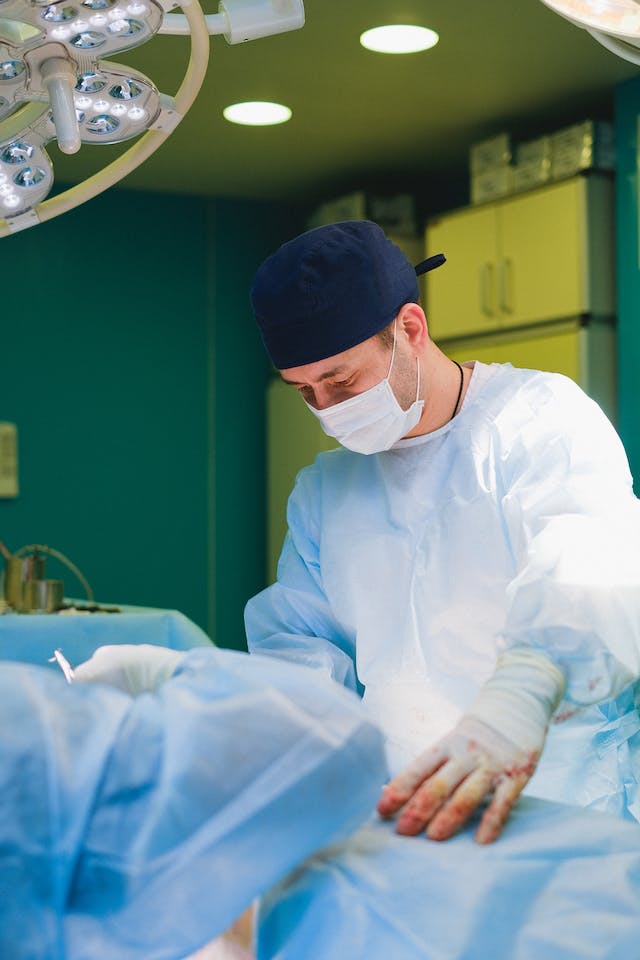 In this informative article, we will explore common adrenal gland disorders, their symptoms, and the surgical treatment options available. The adrenal glands, located on top of each kidney, are responsible for producing essential hormones that regulate various bodily functions. However, certain conditions can disrupt the normal functioning of the adrenal glands, leading to adrenal gland disorders. While non-surgical treatments are often effective, surgical intervention may be necessary in some cases. At Lenox Hill Surgeons, a trusted general surgery practice in New York City, our expert surgeons specialize in adrenal gland disorders and provide advanced surgical approaches to address these conditions.
In this informative article, we will explore common adrenal gland disorders, their symptoms, and the surgical treatment options available. The adrenal glands, located on top of each kidney, are responsible for producing essential hormones that regulate various bodily functions. However, certain conditions can disrupt the normal functioning of the adrenal glands, leading to adrenal gland disorders. While non-surgical treatments are often effective, surgical intervention may be necessary in some cases. At Lenox Hill Surgeons, a trusted general surgery practice in New York City, our expert surgeons specialize in adrenal gland disorders and provide advanced surgical approaches to address these conditions.
Common Adrenal Gland Disorders
The adrenal glands can be affected by different disorders, including:
1. Adrenal Tumors:
Adrenal tumors are abnormal growths that can be benign (non-cancerous) or malignant (cancerous). These tumors can overproduce hormones, leading to hormonal imbalances and various symptoms.
2. Cushing’s Syndrome:
Cushing’s syndrome occurs when the adrenal glands produce excessive amounts of cortisol, a hormone that regulates metabolism. Symptoms may include weight gain, high blood pressure, and muscle weakness.
3. Conn’s Syndrome:
Conn’s syndrome, also known as primary hyperaldosteronism, occurs when the adrenal glands produce too much aldosterone. This hormone regulates sodium and potassium levels, and an excess can lead to high blood pressure and electrolyte imbalances.
4. Pheochromocytoma:
A pheochromocytoma is a rare tumor that develops in the adrenal glands. It causes the glands to produce excessive amounts of adrenaline and noradrenaline, resulting in episodes of high blood pressure, rapid heartbeat, and sweating.
Surgical Approaches to Adrenal Gland Disorders
When non-surgical treatments are ineffective or the adrenal gland disorder poses a significant risk to the patient’s health, surgical intervention may be recommended. The most common surgical approach for adrenal gland disorders is adrenalectomy, which involves the removal of the affected adrenal gland(s). There are two main types of adrenalectomy:
1. Open Adrenalectomy:
Open adrenalectomy is a traditional surgical approach that involves making a larger incision to access and remove the affected adrenal gland(s). This approach may be necessary for larger tumors or complex cases.
2. Laparoscopic Adrenalectomy:
Laparoscopic adrenalectomy is a minimally invasive procedure that utilizes small incisions and specialized instruments. A laparoscope, a thin tube with a camera, is inserted through one of the incisions to visualize the surgical area. The surgeon then removes the adrenal gland(s) using precise instruments inserted through the other small incisions. Laparoscopic adrenalectomy offers advantages such as reduced post-operative pain, shorter hospital stays, and faster recovery compared to open surgery.
Expert Surgical Services at Lenox Hill Surgeons
At Lenox Hill Surgeons, we understand the complexities of adrenal gland disorders and the importance of personalized care. Our team of experienced general surgeons specializes in adrenal gland surgeries, utilizing advanced techniques to ensure optimal outcomes for our patients. We are dedicated to providing comprehensive evaluations, individualized treatment plans, and compassionate care throughout your surgery.
Contact us today to schedule a consultation with our renowned surgeons.
Contact Information:
LENOX HILL SURGEONS
155 East 76th Street
Suite 1C
New York, NY 10021
646-846-1136
lenoxhillsurgeons@gmail.com
Visit our website for more information: https://lenoxhillsurgeons.com/
Preparing for General Surgery: A Step-by-Step Guide
In this step-by-step guide, we will walk you through the key aspects of preparing for general surgery to help you feel confident and informed. Facing the prospect of general surgery can be daunting, but proper preparation can help alleviate anxiety and ensure a smoother recovery process. Whether you’re scheduled for a routine procedure or a more complex surgical intervention, being well-prepared is essential. At Lenox Hill Surgeons, a trusted general surgery practice in New York City, we believe in providing comprehensive care to our patients.
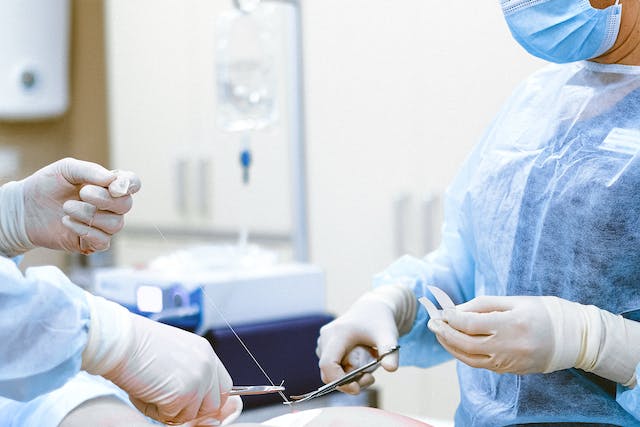
Preparing for General Surgery: A Step-by-Step Guide
Step 1: Consultation and Preoperative Evaluation
The first step in preparing for general surgery is scheduling a consultation with your surgeon. During this appointment, your surgeon will review your medical history, perform a physical examination, and discuss the details of your upcoming surgery. This is also an opportunity to address any questions or concerns you may have. Your surgeon may order preoperative tests, such as bloodwork or imaging, to ensure you are in optimal condition for surgery.
Step 2: Preoperative Instructions
Your surgeon and their team will provide you with specific preoperative instructions tailored to your procedure. These instructions may include dietary restrictions, medication guidelines, and guidance on preparing your body for surgery. It is crucial to follow these instructions carefully to minimize potential complications and ensure the best possible outcome.
Step 3: Lifestyle Adjustments
Depending on your procedure, you may need to make certain lifestyle adjustments in the days or weeks leading up to surgery. This may involve quitting smoking, avoiding certain medications or supplements that can interfere with the surgery, and adjusting your diet to promote healing. Your surgeon will provide guidance on these adjustments based on your individual needs.
Step 4: Preparing Your Support System
Having a strong support system is invaluable during the surgical process. Arrange for someone to accompany you to the hospital on the day of surgery and stay with you during the initial recovery period. This person can provide emotional support, help with practical matters, and assist you in following postoperative instructions.
Step 5: Mental and Emotional Preparation
Surgery can be emotionally challenging, so it’s important to take care of your mental well-being. Engage in relaxation techniques, such as deep breathing exercises or meditation, to help manage stress and anxiety. Stay informed about your procedure but avoid excessive online research that may increase worry. Trust in the expertise of your surgeon and the healthcare team supporting you.
Step 6: Preparing for Hospital Stay
If your surgery requires an overnight hospital stay, pack a small bag with essential items, such as comfortable clothing, toiletries, and any necessary medications. Follow fasting instructions provided by your surgeon to ensure your stomach is empty before the procedure. Arrive at the hospital on time, and be prepared for necessary paperwork and preoperative preparations.
Step 7: Postoperative Recovery Plan
Before your surgery, discuss the postoperative recovery plan with your surgeon. Understand what to expect in terms of pain management, wound care, dietary guidelines, and activity restrictions. Arrange for follow-up appointments and ensure you have the necessary support and resources in place for a smooth recovery at home.
Expert General Surgical Services at Lenox Hill Surgeons
At Lenox Hill Surgeons, we are dedicated to providing exceptional surgical care and support throughout your surgical journey. Our team of experienced general surgeons utilizes advanced techniques and compassionate care to ensure optimal outcomes and patient satisfaction.
Contact us today to schedule a consultation and benefit from the expertise of our renowned surgeons.
Contact Information:
LENOX HILL SURGEONS
155 East 76th Street
Suite 1C
New York, NY 10021
646-846-1136
lenoxhillsurgeons@gmail.com
https://lenoxhillsurgeons.com/
Gallbladder Surgery: Common Disorders and Surgical Solutions
Various conditions can affect the gallbladder, leading to discomfort and potential complications. Gallbladder surgery may be necessary when conservative treatments fail to alleviate symptoms. The gallbladder is a small organ located beneath the liver that plays a vital role in the digestion of fats. At Lenox Hill Surgeons, a leading general surgery practice in New… Continue Reading
Common General Surgeries and Their Importance for Patients
When it comes to addressing various health conditions and improving quality of life, general surgery plays a crucial role. General surgeons are skilled professionals who specialize in a wide range of surgical procedures. At Lenox Hill Surgeons, a renowned general surgery practice in New York City, our team of expert surgeons is dedicated to providing… Continue Reading
Understanding Laparoscopic Surgery: Minimally Invasive Procedures in Manhattan
In this informative article, we will explore laparoscopic surgery, its advantages, and the range of procedures it encompasses. Advancements in surgical techniques have revolutionized the field of medicine, allowing for more precise and minimally invasive procedures. Laparoscopic surgery, also known as keyhole surgery, has gained popularity for its numerous benefits compared to traditional open surgery.… Continue Reading
Appendix Surgery: Understanding Appendicitis and Surgical Interventions
In this informative article, we will explore appendicitis, its symptoms, and the surgical interventions available for its treatment. The appendix may be a small organ in the human body, but when it becomes inflamed, it can cause significant pain and discomfort. Appendicitis is a common condition that often requires surgical intervention to prevent complications. At… Continue Reading
Colon Surgery: Exploring Procedures for Colon Conditions
In this article, we will explore different procedures for colon conditions and their importance in restoring health and well-being. The colon, also known as the large intestine, plays a vital role in the digestive process. However, various conditions can affect the colon, such as colon cancer, diverticulitis, and inflammatory bowel disease. When conservative treatments fail… Continue Reading
Choosing the Right General Surgeon: Key Questions to Ask
If you need to get surgery, when it comes to your health and well-being, choosing the right general surgeon is crucial. Whether you require a routine procedure or a complex surgery, finding a skilled and experienced surgeon is essential for optimal outcomes. At Lenox Hill Surgeons, a leading general surgery practice in New York City,… Continue Reading
Hernia Repair: Types, Symptoms, and Treatment Options
If you’re experiencing discomfort or a noticeable bulge in your abdomen, it could be a hernia. Hernias occur when an organ or tissue protrudes through a weak spot in the surrounding muscle or connective tissue. They can cause pain, discomfort, and affect your quality of life. At Lenox Hill Surgeons, a leading general surgery practice… Continue Reading
Guide to General Surgery in Manhattan: What You Need to Know
Guide to General Surgeries in NYC: Restoring Health through Surgical Interventions If you’re considering general surgery in Manhattan, it’s essential to be well-informed about the various procedures available, their benefits, and what to expect throughout the process. At Lenox Hill Surgeons, a leading general surgery practice in New York City, we understand the importance of… Continue Reading
Types of Hernias: Ventral Hernia
What is a ventral hernia? Hernias can occur in any part of your body. Each different type of hernia gets its name depending on where it occurs. In its true nature, a hernia refers to a condition in which the internal muscle tissue weakens or becomes thin. In this case, the abdominal or whichever muscle… Continue Reading
Types of Hernias: Inguinal Hernia
An Inguinal Hernia is a condition in which one spot of the abdominal muscle weakens, and this causes muscle tissue to protrude outwards, causing a bulge. Therefore, you can call this hernia a protrusion bulge as well. It is the projection of an organ through the muscle tissues that make up the body wall. Mostly,… Continue Reading
General Surgery: Colon Cancer
People with colon cancer mostly have to undergo general surgery. It is the primary treatment for people with early stages of colon cancer. Furthermore, there are different types of colon surgeries. The doctors choose to perform between each of the surgery by considering certain factors. These factors involve the severity of cancer, location of the… Continue Reading
Do you Think you May Have a Hernia?
Do you think you may have a hernia? Read on to learn all about what hernias are and how they are caused. Many people classify Hernias into different kinds, Inguinal, Femoral, Incisional, and Umbilical. However, few understand the exact occurrence of the Hernia. You will find most of the hernia occurrences in the abdominal regions… Continue Reading












